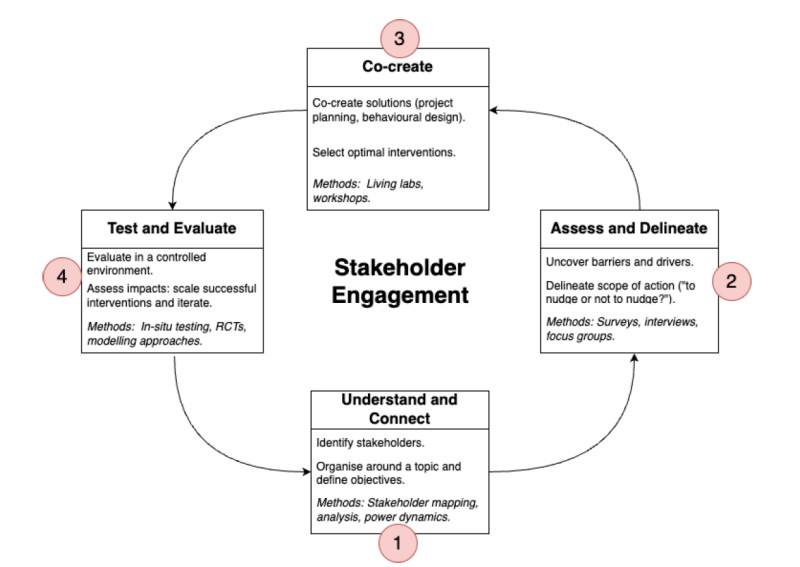Posted: May 16, 2024

Stakeholder engagement is a hot topic in the discussion about positive energy communities or districts. Some understand it as simply informing citizens during the planning process to avoid conflicts. Others see it as an opportunity to promote virtuous energy behaviour that supports the integration of solar technologies. Still others see the feedback from involved stakeholders as a central component in understanding the needs and preferences of the population. Very few people systematically look at stakeholder involvement from a scientific perspective. One research group that does is the IEA SHC Task 63 on Solar Neighbourhood Planning. They looked at case studies where engagement activities were carried out and considered them through the lens of participatory and behavioural design approaches. This discussion culminated in the development of a stakeholder ENGAGEment behavioural Design framework (ENGAGED), which is described in one of the most recent Task 63 reports titled “An Integrated Framework for Stakeholder and Citizen Engagement in Solar Neighbourhoods”. Download the report below.
“Our goal with this report is to create further awareness of the importance of engaging with different stakeholder groups in the context of solar neighbourhood planning and our ENGAGED framework aims to provide practical guidance in this direction,” said Maria Wall, Associate Professor at Lund University’s Energy and Building Design division in Sweden and Chair of Task 63.
ENGAGED defines an iterative process in which the stakeholder engagement activities are intended to be carried out in multiple stages adapted to solar neighbourhood project cycles, from planning to implementation. The method is shown in the following diagram, which was developed by the Task 63 expert group in a series of three workshops.
- “Understand and Connect" is the first phase, for defining the project objectives. This includes the carrying out of a stakeholder analysis as well as public consultations, fireside chats, or networking activities.
- “Assess and Delineate” is the title of the second phase, which is used for assessing the barriers and opportunities for moving from the current status quo to a future situation that meets the defined goals. Collecting information through surveys and interviews can be helpful.
- “Co-create” is a crucial phase in which solar solutions are assessed and chosen. Living labs can play a crucial role at this stage, for example to test innovative technologies and solutions with end-users.
- “Test and Evaluate” is the title of the fourth phase. Here the identified solutions should be tested and evaluated before scaling-up. If the solutions involve large-scale technical interventions then modelling will be very important in this regard. Other smaller-scale measures, such as IT solutions or behavioural interventions, could be tested using randomized controlled trials connected with interviews.

Stages of the newly developed framework ENGAGED, Source: Task 63
Co-creation process creates trust
“We have seen from the case studies that urban planners often focus the stakeholder involvement on phases 1 and 2. But we highly recommend also including citizens in the choice and design of solutions”, explained Wall. For example, a large identification with solar systems on roofs or facades ensures that the end-users of the buildings are ready to open the doors for participatory and promotional activities once the solar neighbourhood is implemented.
A lot of things went right in terms of stakeholder engagement at the Bolzano Smart City Project in Italy. Six social housing complexes with 21,200 m2 of living space have been extensively renovated there. Several key decisions were taken during the planning process based on door-to-door interviews with building representatives and questionnaires, as well as follow-up meetings. "This greatly enriched project outcomes, increasing trust as a result of the co-creation process," it says in the conclusion chapter.
The Solar Neighbourhood Planning research platform of the IEA Solar Heating and Cooling Programme is currently being completed. In the next few weeks, more reports resulting from four years of interdisciplinary work will be uploaded to the Task 63 website, see: https://task63.iea-shc.org/publications
Websites of organizations mentioned in this article: